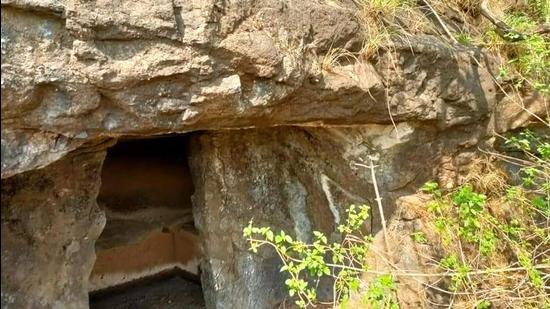3 new caves in Nashik’s Pandav Leni complex; ASI to launch extensive survey
Trirashmi caves are a group of 24 caves dated between 1BC and the 6-7AD. The caves are on a vertical face of the hill and are a tourist attraction. ASI staff discovered the three new caves during the cleaning process.
The Archaeological Survey of India (ASI) has found three more caves in the Trirashmi Buddhist cave complex, also known as Pandav Leni, near Nashik, Maharashtra.

This discovery in May has led archeologists to believe that there could be more hidden and unseen caves in the same area. Considering this possibility, the ASI is planning a thorough survey of the hill.
Trirashmi caves are a group of 24 caves dated between 1BC and the 6-7AD. The caves are on a vertical face of the hill and are a tourist attraction. ASI staff discovered the three new caves during the cleaning process.
“After the discovery of the caves, a detailed report has been submitted to the Aurangabad circle office. Two of the 3 caves were discovered when the cleaning work was on. We are planning to do a detailed survey of this mountain to check if there are more hidden caves,” said Rakesh Shende, senior conservation assistant of ASI, Nashik. A further search led the team to the third cave.
Also Read | Maharashtra man held for sexually harassing wife; holding her in confinement
The Trirashmi Buddhist caves complex was first documented in 1823 by Captain James Delamaine and is now an ASI- protected site.
A preliminary examination has led archeologists to believe that these could be older than the Trirashmi caves. Atul Bhosekar, director of Mumbai-based Trirashmi Research Institute of Buddhism, Indic Language and Scripts, said an extensive study of these caves may redefine the chronology of Buddhist caves in Maharashtra.

“Whatever we could gather from archeological parameters, historical records, and a comparison with the nearby caves, such as Kanheri near Nashik, Karle-Bhaje near Pune, it appears that these newly discovered caves are in the rudimentary stage of building. Our prima facie guess is that these three caves were built before the other caves. An extensive study and proper documentation have to be done for us to ascertain the accurate age of these caves,” he said.
“There could be still 2-3 more caves in this area that are yet to be discovered. The entire Trirashmi mountain has to be scanned in a proper way. There are 2 factors behind why these caves remained hidden for so long. The first documentation of the complex was done in 1823. At that time, there must be a dense forest in that area. Now also, people visit the caves or directly go to the top of the mountain. There are caverns that remain hidden in the bushes and the trees from the human eye. The third cave which we discovered was very difficult to reach,” he said.



